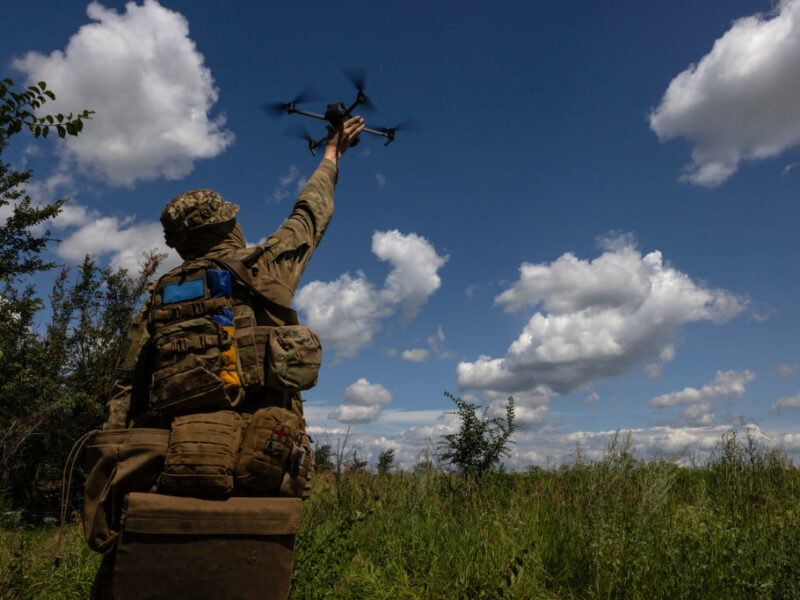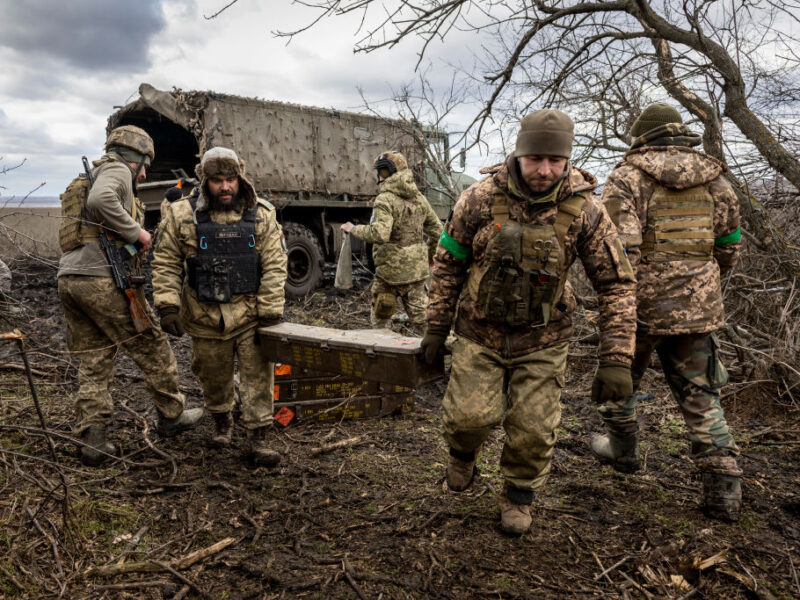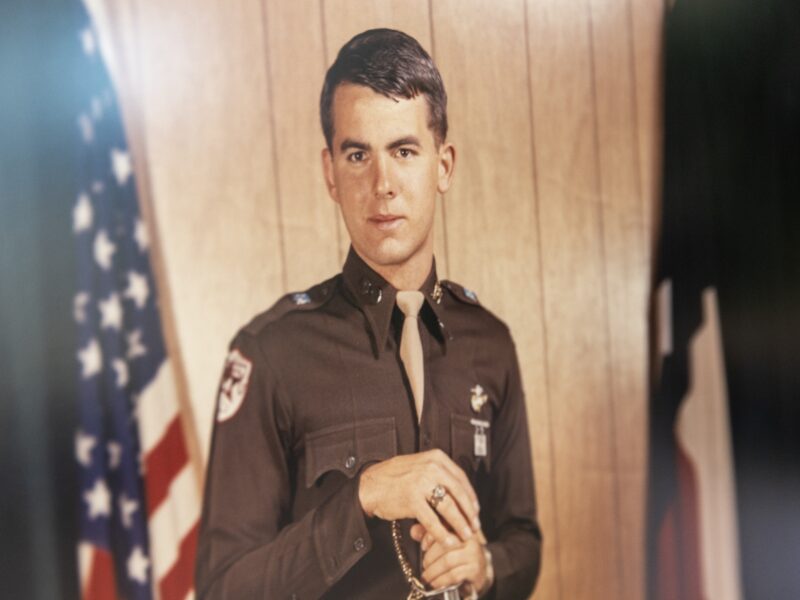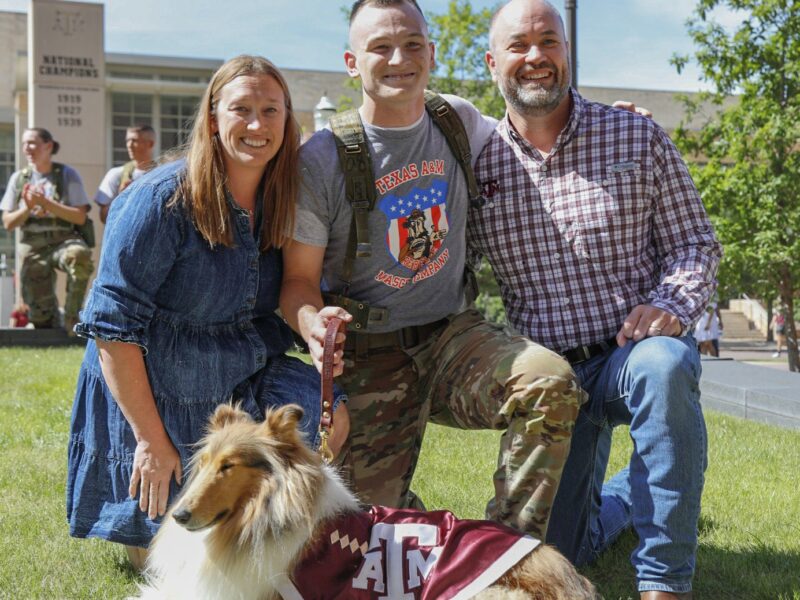New Monument Will Commemorate Corregidor Musters
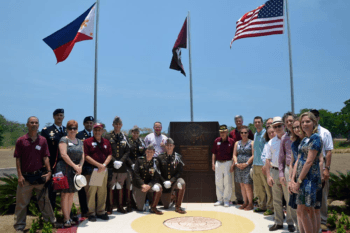
On Muster day, a memorial will be dedicated on the island of Corregidor in honor of the Aggies who Mustered there in 1942 and 1946, along with all Aggies who defended Corregidor and Bataan during World War II.
Using a series of four panels, the monument will list nearly 200 names. Simple in design, the monument represents the sacrifice, bravery and Aggie Spirit of those Ags.
Muster is a day to remember, so as Aggies prepare to fly to the Philippines for the dedication, here are the stories behind those two Musters. They are worth committing to memory.
April 21, 1942
World War II had the nation in a chokehold. In the fight against Japan, the small island of Corregidor in Manila Bay was the last of America’s strongholds in the area. First-hand accounts published in the book Softly Call the Muster by John A. Adams, Jr. ’73 tell how America’s war strategy in the Pacific depended on the strength of Manila Bay — and how Texas Aggie Brig. Gen. George F. Moore, Class of 1908, was one of the soldiers commissioned to defend it.
As the small island continued to be pummeled by artillery shells from Japanese planes, the only safe spot for American soldiers was the bombproof Malinta Tunnel. The 830-foot by 35-foot passageway — used as headquarters, supply depot and makeshift hospital — became the spot of Aggie legend.
It was April 21. Adams’s book said Moore asked another Aggie, Maj. Tom Dooley ’35, if they could get a list of the Aggies fighting at Corregidor. There were 27 Aggies on Corregidor that day.
“So, we had a roll call, and a muster is a roll call,” Dooley was quoted as saying. He sent word to one of the news correspondents reporting from the island, and the reporter wired the story back to the states.
Aggies know the story. What was broadcast back to America — which told the story of “a little band of Aggies roaring and singing their defiance” — was a stretch of the reality. Artillery shells rained from the sky; historians say there is no way the Aggies were able to physically gather.
The article encouraged a war-weary nation. The story of Muster was told across the country, which “solidified one of the most meaningful traditions we have,” said Marty Holmes ’87, vice president of The Association.
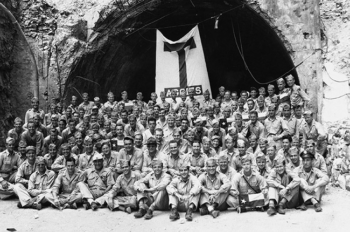
April 21, 1946
It was Muster day in the Philippines once more. The boys who’d so quickly become men jumped in their jeeps, boarded boats and sailed the Pacific to stand at the mouth of the Malinta Tunnel.
With the war won and the Filipinos liberated from Japanese occupation in 1945, another duty remained. Muster again on the island of Corregidor, on “the Rock” where Aggies did the same in 1942 right through the Japanese Siege. Bunkered inside the Malinta Tunnel, most of those men of 1942 died or were taken prisoner when Corregidor fell to the Japanese.
They came from their respective posts in 1946 to Muster on Corregidor and honor those lives lost.
They used a bed sheet to improvise an Aggie flag and hung it over the Malinta Tunnel to stand at attention, all 128 of them, for The Spirit of Aggieland.
There’s a photograph of those men in front of their homemade flag. It’s famous in Aggieland. When people think about the importance of Muster, for many they’re reminded of that image, Holmes said. Their example reminds Aggies that Muster is more than an event, he said. “It’s honoring those who have gone before us and made A&M what it is,” he said.
During World War II, there were more officers from Texas A&M than from any other school and more than the combined total of the U.S. Naval Academy and U.S. Military Academy.
“Aggies give so much for our country and represent our university so well. The fact that we’ve been given the opportunity to have a monument on Corregidor that represents our contributions to World War II and the Philippines is just great,” Holmes said.
The idea for a monument first came from an Aggie in the Philippines, said Josh Reinbolt ’99, director of former student programs at The Association and funding the project happened extremely quickly. “Everything that was needed was given by a few individuals and A&M Clubs,” he said.
“Once an Aggie, always an Aggie,” Reinbolt said. “We know that, because of Muster and because of the Aggie Spirit, you will always be remembered — you’ll always have someone to say ‘here’ for you.”
Here.
This article by Stephanie Jeter Cannon originally appeared in the Texas AGGIE Magazine.
